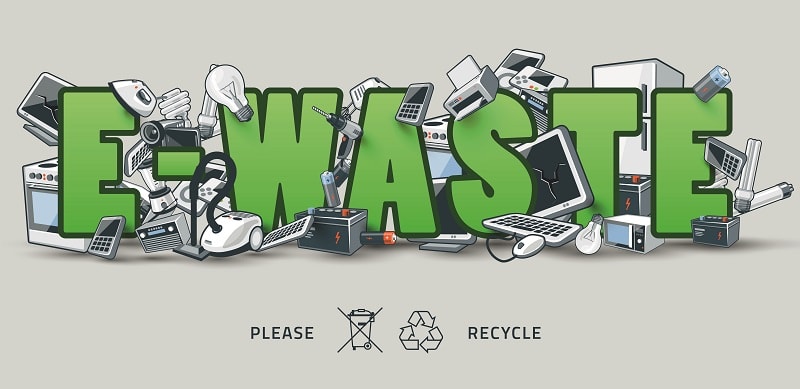By: Gary Audin
IT assets can include servers and storage devices, but also computers, tablets, cameras, and even our phones. It is called e-waste when you discard it.
What is E-Waste?
E-waste is the term applied to consumer and business electronic equipment that is near or at the end of its useful life. There is no clear definition for what is
included in e-waste. E-waste for businesses does include:
- Computers, scanners, servers, storage systems, routers, switches, smartphones, tablets
- Cameras and media players
- Printers, monitors, external hard drives, FAX machines
- IoT endpoint devices
- Gaming consoles
Disposing Electronic Devices
When your electronic devices are being replaced or coming to the end of their life you can:
- Throw it away without regard to the regulations, environmental impact, or security problems you create
- Give it away to someone who could use the electronic devices or to a charitable organization
- Recycling devices through refurbishment and maintenance can extend their life for you or for someone else who may want to purchase the devices
- Destroying the devices may solve your security issues but you still have to dispose of the technology complying with the regulations for disposal
- Selling the device to someone else who can then refurbish and maintain it. You still have to deal with removing the stored information as a security problem.
- There are disposal services that will take care of all the issues. The services may destroy them or they may refurbish them and recycle them. They can also take care of any of the security issues.
Did You Just Give Away Data?
Information stored on the IT devices can lead to the loss of other information. Data elements are often linked together. A company’s reputation can be damaged. Regaining that reputation can be very costly, time-consuming, and may not be possible. A vendor could lose intellectual property information which in turn could cause severe revenue damage.
Data Security Issues
“Security Tip (ST18-005) Proper Disposal of Electronic Devices” by The National Cybersecurity and Communications Integration Center’s (NCCIC) mission is to reduce the risk of systemic cybersecurity and communications challenges.
NCCIC as part of the Department of Homeland Security (DHS) is the national hub for cyber and communications information, technical expertise, and operational integration. NCCIC operates our 24/7 situational awareness, analysis, and incident response center.
This tip recommends methods to:
- Backup data
- Delete data from any device that stores data
- Overwriting
- Destroying data with degaussers, solid state, CD, and DVD
For more information, access the “NIST Special Publication 800-88 Guidelines for Media Sanitization”
E-waste Regulations
In the US, there are federal and state requirements for disposing of e-waste. More than 2 dozen states currently have legislation that dictates how to dispose of or recycle e-waste. In Texas, disposing of a PC with 8 different kinds of hazardous metals can cost thousands of dollars per unit per metal. The poor disposal of one PC could cost well over $10,000 in fines. There are regulations for some industries in the US including healthcare and financial services that require compliance for e-waste.
Recycle
The UN report “The Global E-waste Monitor 2017” states that the US produces about 14% or 6.3 million tons of the world’s electronic waste. Globally, there is about 45 million tons of electronics disposed in 2016. It was estimated that only 20% was recycled in some shape or form. The remaining 80% ended in landfills creating environment damage.
The Forbes article “Recycling Is Not The Answer To The E-Waste Crisis” contends that recycling is outpaced by the continued production of new electronic devices The Forbes article states that “We are currently losing ground in the battle to reduce the environmental impact of our electronic equipment.” The article goes on to conclude that recycling should not be used as a cover-up of the e-waste pollution model. Recycling is useful; however there is a real need to recognize the limitations of electronics recycling and to look hard at the root of our growing e-waste problem in order to develop more effective approaches.
Reuse, refurbishment, and maintenance are even more important than recycling. Extending the life of the devices currently in existence can have a meaningful effect on their environmental impact. Producing products that are easy to repair improves the probability of reuse. Buying refurbished electronics instead of new devices is another solution. For more information and guidance, visit the EPA website “Electronics Donation and Recycling”
You may consider your effort for disposing of electronic devices to be a small part of the problem. But if everyone assumes that position, the problem will be greater. Unfortunately, it sometimes takes regulations to force people to follow the best policies. Complying with the regulations is cheaper than ignoring them. You should create a policy within your organization that focuses on what you do with electronic devices and how you dispose of them.
